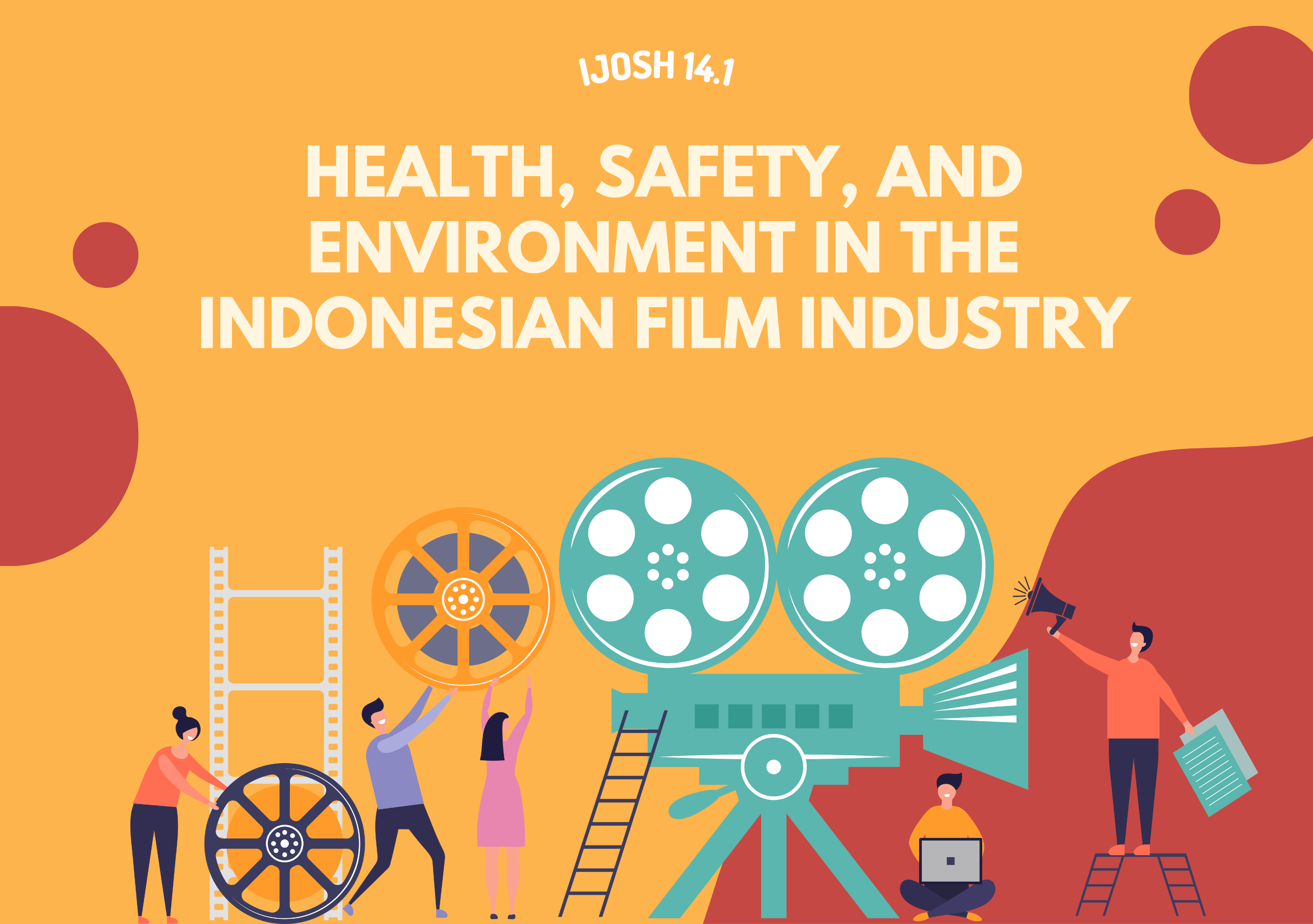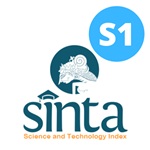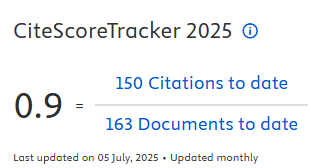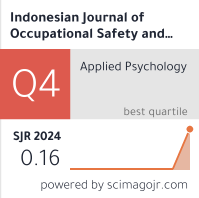Health, Safety, and Environment in the Indonesian Film Industry

Downloads
Introduction: As stipulated in the Indonesian Labor Law, every worker is entitled to work safety and health protection, including the film industry. This research focuses on two articles in the Health, Safety, and Environment (HSE) regulations and the Law of Film Year 2009. However, the Indonesian film industry has not officially implemented these laws. There have been several cases of HSE, which caused death or fatal injuries to film workers, without applying the regulations. Other HSE issues include the cases where only a few film producers gave insurance to the film workers, applied proper risk assessment, or provided first aid kits. The paper will overview HSE in the Indonesian film industry by mapping out the problems and potential solutions. Methods: By having in-depth interviews with key persons in the field, such as the workers and film producers, this research aims to map out such issues and answering why and how the laws on work health and safety are not implemented in the Indonesian film industry. Result: This research has resulted in maps of problems and recommendations for policymakers, film workers, and related institutes concerning HSE and the rights of film workers, including of the lack awareness of film workers on HSE and HSE-related curriculum in film education, as well as the need for stronger film associations and union. Conclusion: HSE in the Indonesian film industry must be evaluated to be more effective. Some factors to be reviewed include law enforcement in contracts, health insurance, the collaboration of various parties, HSE-related knowledge in the curriculum in Indonesian film education, and the application of Work Competency Standards (SKKNI) to all film professional associations.
Anderson, M. (2024) ‘Film Students’ Occupational Health and Safety at Aalto University’. Thesis. Espoo: Master’s Programme in Film and Television, Aalto University.
Arditi, D.M. (2021) ‘Precarious Labor in COVID Times: The Case of Musicians’, Fast Capitalism, 18(1), pp. 13-25. https://doi.org/10.32855/fcapital.202101.002.
Block, P.L. (2021) A report on mapping mental health training in the Film and TV Industry. The Film and TV Charity.
Bourdouxhe, M. and Toulouse, G. (2001) ‘Health and Safety among Film Technicians Working Extended Shifts’, Journal of Human Ergology, 1(2), pp. 113–18.
Centre for Occupational Safety (2022) ‘Occupational Health And Safety In The Film And TV Production Industry: Brief Guidelines to Support Production’, The Centre for Occupational Safety [Preprint].
De Peuter, G. (2011) ‘Creative Economy and Labor Precarity: A Contested Convergence’, Journal of Communication Inquiry, 35(4), pp. 417–425. https://doi.org/10.1177/0196859911416362
Fibriadi, B. (2019) ‘K3 dalam Industri Film Indonesia’.
Gawley, T. and Dixon, S. (2020) ‘Covered in Coal: Examining Workplace Injury, Illness, and Fatality in the Film Blood on the Mountain’, New Solutions: A Journal of Environmental and Occupational Health Policy, 30(1), pp. 69-74.
Gawley, T. and Dixon, S. (2021) ‘Trading Health for Work: Recognizing Occupational Safety and Worker Health in the Film, American Factory', New Solutions: A Journal of Environmental and Occupational Health Policy, 3(1), pp. 89–95.
Imanjaya, E. and Rosidah (2022) ‘To Shoot or Not to Shoot: Health protocols in Indonesian Film Industry Thriving Sustainable Business during Pandemic’, Proceedings of the 3rd Asia Pacific International Conference on Industrial Engineering and Operations Management [Preprint]. Available at: https://ieomsociety.org/proceedings/2022malaysia/586.pdf.
Indonesian Labour Law - Act 13 of 2003 (2003). Law. STATE GAZETTE OF THE REPUBLIC OF INDONESIA. Available at: https://webapps.ilo.org/dyn/travail/docs/760/Indonesian+Labour+Law+-+Act+13+of+2003.pdf.
Izzati, F. et al.. (2021) Pekerja Industri Kreatif Indonesia: Flexploitation, Kerentanan, dan Sulitnya Berserikat. Jakarta: SINDIKASI x FNV Mondiaal.
Joang, H.R. (2019) ‘K3 dalam Industri Film Indonesia’.
Kerrigan, S. et al. (2011) ‘Australian Universities Approaches to Occupational Risk Management for Screen Production’, TEXT, 15(Special 11)., pp. 1-14. https://doi.org/10.52086/001c.31376
Khaled, A.F.M. and Ansar, A. (2024) ‘Bangladesh’s Ready-made Garments Sector Rebound: Revisiting Gendered Labor Precarity and Dependency’, Asian Journal of Comparative Politics, 9(2), pp. 218–237. https://doi.org/10.1177/20578911231170208.
Law No. 33 Years 2009 (2009) Film. Jakarta: Government of Indonesia. Available at: https://peraturan.bpk.go.id/Details/38772/uu-no-33-tahun-2009.
Larroulet, P., Daza, S. and Bórquez, I. (2023) ‘From Prison to Work? Job-crime Patterns for Women in a Precarious Labor Market’, Social Science Research, 110, p. 102844. https://doi.org/10.1016/j.ssresearch.2022.102844.
Morawetz, N. et al. (2007) ‘Finance, Policy and Industrial Dynamics—The Rise of Co‐productions in the Film Industry’, Industry & Innovation, 14(4), pp. 421–443. https://doi.org/10.1080/13662710701524072.
Morgan, G., Wood, J. and Nelligan, P. (2013) ‘Beyond the Vocational Fragments: Creative Work, Precarious Labour and the Idea of “Flexploitation”’, The Economic and Labour Relations Review, 24(3), pp. 397–415. https://doi.org/10.1177/1035304613500601.
O’Hagan, J.B. (1998) A Risk Assessment Methodology for the Use of Lasers in the Entertainment Industry. Thesis. Loughborough: Doctor of Philosophy, Loughborough University.
Oughton, N. (2011) ‘Managing Occupational Risk in the Creative Industries: A New Perspective—or has OHS Reached its use-by Date?’, TEXT, 15(Special 11), pp. 1-11. https://doi.org/10.52086/001c.31380.
Paggaru, G. (2019) ‘K3 dalam Industri Film Indonesia’.
Government Regulation (PP) Number 50 of 2012 (2012) Penerapan Sistem Manajemen Keselamatan Dan Kesehatan Kerja. Jakarta: Government Regulation. Available at: https://peraturan.bpk.go.id/Details/5263/pp-no-50-tahun-2012.
Phadke, S. (2005) ‘“You Can Be Lonely in a Crowd”: The Production of Safety in Mumbai’, Indian Journal of Gender Studies, 12(1), pp. 41–62. https://doi.org/10.1177/097152150401200102
Phillips, L.E. et al.. (2022) ‘Film production during the Covid-19 pandemic’, Occupational Medicine, 74(1), pp. 24–28. p. kqac102. https://doi.org/10.1093/occmed/kqac102.
Pokorny, M. and Sedgwick, J. (2012) ‘The financial and economic risks of film production’. In Hjort, M. (Ed.), Film and Risk (pp.181-195). Wayne State University Press.
Raharjo, I. (2022) ‘SINDIKASI & ICS: Kertas Posisi “Sepakat di 14” Advokasi Pembatasan Waktu Kerja dan Perlindungan Hak Pekerja Film Indonesia’. Serikat Pekerja Media dan Industri Kreatif untuk Demokrasi (SINDIKASI). Available at: https://sindikasi.org/resources/kertas_posisi_sepakat_di_14.pdf.
Rimscha, M.B.V. (2011) ‘Handling Financial and Creative Risk in German Film Production’, Wide Screen Journal, 3(1), pp. 1-19.
Setyowati, D. (2018) ‘Tumbuh Dua Digit, Bekraf Fokus Kembangkan Potensi Industri Film’. Available at: https://katadata.co.id/berita/nasional/5e9a55d52caad/tumbuh-dua-digit-bekraf-fokus-kembangkan-potensi-industri-film.
Sindikasi, S. (2024) ‘Kecelakaan Pekerja Film, SINDIKASI: Perbaikan Kondisi Kerja Industri Film Semakin Mendesak’.
Small, R. (2020) Production Safety for Film, Television and Video. Waltham: Focal Press.
Sørensen, I.E. and Noonan, C. (2022) ‘Production, Policy and Power: the Screen Industry’s Response to the Environmental Crisis’, Media, Culture & Society, 44(1), pp. 172–184. https://doi.org/10.1177/01634437211065697.
Zidni, F. (2019) ‘K3 dalam Industri Indonesia’.

This work is licensed under a Creative Commons Attribution-NonCommercial-ShareAlike 4.0 International License.

In order to be accepted and published by The Indonesian Journal of Occupational Safety and Health, Author(s) who submit an article should complete all the review process. The copyright of received articles assigned to the The Indonesian Journal of Occupational Safety and Health and Department of Safety and Health, Universitas Airlangga as publishers of the journal. The intended copyright includes the rights to publish articles in various forms (including reprints).
The Editorial Team of The Indonesian Journal Of Occupational Safety and Health and Department of Safety and Health strive to ensure that no errors occur in the articles that have been published, both data errors and statements in the article.
Users of this website will be licensed to use materials from this website following the Creative Commons Attribution-NonCommercial-ShareAlike 4.0 International License. No fees charged. Please use the materials accordingly.
------------------------------------------------------------------------------------------------------------------------------------------------------------------------------------------
Attribution ” You must give appropriate credit, provide a link to the license, and indicate if changes were made. You may do so in any reasonable manner, but not in any way that suggests the licensor endorses you or your use.
NonCommercial ” You may not use the material for commercial purposes.
ShareAlike ” If you remix, transform, or build upon the material, you must distribute your contributions under the same license as the original.







 How to Submit Articles in OJS
How to Submit Articles in OJS

























